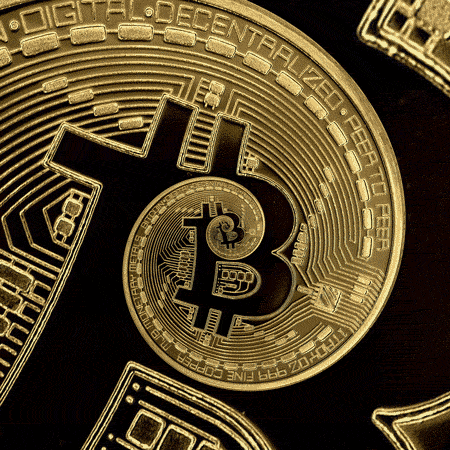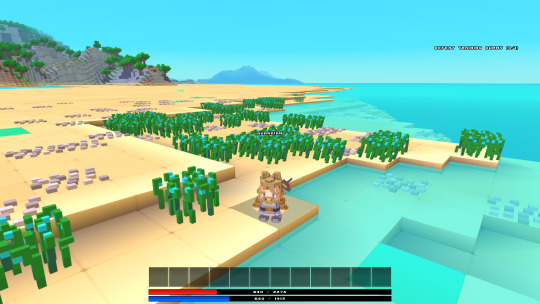Text
How to make $1000 to $1500 with cake defi?
Get returns of up to 100% on your crypto. Enjoy a $30 USD sign up bonus + $10 Learn and Earn Bonus.

Put your crypto assets to work with Cake DeFi - the simple, safe, and sincere way to earn sweet passive income of up to 100% APY on your crypto assets.
Earn on Bitcoin, Ethereum, DeFiChain and many other coins. Now with a $20 USD sign up bonus* for a limited time!
Bakers on Cake DeFi can enjoy:

MAKING FINANCES FUN
• Earn passive income on any of your cryptocurrencies including Bitcoin, Ethereum, DeFiChain, Litecoin, Tether, Bitcoin Cash and more
• Easy to use interface: Easier than baking a cake, you can earn on your crypto!
• Deposit, withdraw, and start earning any time! No minimum deposit.
SAFETY & TRANSPARENCY
• Cake Pte Ltd. is a financial services provider registered and regulated in the global financial center Singapore. Your money feels home!
• Consistent track-record of providing tasty returns for over 2 years, with complete transparency on how the returns are generated.
• Secured by multi-sig and cold storage: Cake DeFi employs industry-leading security facilities to ensure your assets are stored cold by default and hot only when it moves.
COMMUNITY
• Nobody bakes alone. Join an awesome community of over 100,000 Cake DeFi bakers just like you and start earning today.
• Cake DeFi has arguably the best customer retention in the industry. Once a baker, always a baker.
• The equivalent of a 5-star chef – Cake DeFi's Customer Support is always ready to assist you.
Download the Cake DeFi app and start putting your crypto to work for you. For a limited time, get FREE $20 USD sign up bonus when you make your first deposit.

* A first deposit of $50 is required in order for you to receive the $30 sign up bonus.

0 notes
Text
Visit https://www.metaverse-india.com
To list your Nfts for free

0 notes
Text
Get Latest news , articles and Earn rewards in form of money and crypto for free
Visit www.metaverse-india.com
0 notes
Text
Metaverse

Metaverse, which is a mixture of two terms —'meta,’ which means beyond in Greek, and universe – has no single definition. As a result,‘metaverse’ can be informally translated as 'beyond universe.’
The metaverse realm, according to Dinis Guarda, founder of LynKey, a blockchain-powered prop-tech platform, is a mix of features where users can “dwell” within a digital universe and interact with other users. Blockchain technology, virtual reality, augmented reality, and game theory are some of the ingredients that make up the metaverse.
The Cryptoverse’s Relationship with the Metaverse
The majority of metaverse projects are currently games that provide the 3D portion of the metaverse. There are, however, numerous more aspects that are required for the metaverse to be buit.By providing numerous crucialcapabilities, blockchain or crypto can fill a need in the metaverse.
The expanding number of crypto initiatives in the metaverse would indicate the productivity that blockchain or crypto offers to the metaverse.
Here are some of the fundamental characteristics of blockchain or crypto that correspondwith the metaverse's intended design.
Ownership Documentation
For assets in the metaverse, blockchain provides digital proof of ownership. Your private keys could establish your ownership of goods or activities on a blockchain if you own a crypto wallet. As a result, metaverse crypto initiatives could offer reliable and safe means for proving ownership and digital identification.

Changing the Value
The ability to transmit value is yet another crucial requirement in the metaverse. Furthermore, the metaverse would require a way for transferring value while maintaining user confidence. Crypto, for example, is more secure on a blockchain than multiplayer gaming in-game money. As a result, crypto can absolutely provide dependable currency for people who want to spend a lot of time in the metaverse.
Interoperability
The element of interoperability facilitated by blockchain in the metaverse also plays a role in the viability of the finest metaverse crypto projects. Blockchain can make it possible for distinct areas in the metaverse to communicate with one another. Avalanche and Polkadot, for example, allow users to create bespoke blockchains that can communicate with one another.

Governance
Rules are required in any digital realm that resembles the real world, and the metaverse is no exception. Users would be most interested in the capacity to set their own rules for interacting with the metaverse. In the metaverse, blockchain provides the right platform for fair and transparent governance.

Collectibles’ Uniqueness
Digital collectability is the most important component of metaverse blockchain and crypto initiatives. For the proposed real-life activities, you would need to demonstrate the uniqueness and originality of assets in the metaverse. NFTs can aid in the creation of one-of-a-kind assets, while blockchain technology may give an appropriate representation of physical asset ownership.
Credit : metaverse-india.com
2 notes
·
View notes
Text
The 4 Most Effective Crypto Lending Platforms
One of the advantages of cryptocurrency investing is the opportunity to use your crypto assets as collateral for a loan, even if your holdings are small. Securities-based lending is a comparable technique in traditional markets, although it is typically restricted to high-net-worth clientele of private banks and large financial institutions.

Crypto loans are far more accessible, and they provide a mechanism for “hodl” investors to get liquidity from their investment without having to sell it. We’ll go over some of the greatest DeFi and CeFi crypto lending platforms in this article.
Top DeFi lending platforms
1. Borrow from Oasis (MakerDAO):
Oasis Borrow is a crypto loan hub in the Maker ecosystem that supports the DAI stablecoin. Maker loans are appealing because they are essentially personal loans. Anyone with cryptocurrency and a MetaMask wallet can open a Maker Vault and start minting DAI. You put up an asset as collateral with Oasis Borrow and agree to either mint a certain amount of DAI or pay back your loan before unlocking your asset. So, essentially, you are borrowing the cryptocurrency that your collateral asset will generate.
Maker provides both a 50% and a 75% LTV rate for crypto loans, with the higher rate receiving higher stability fees (which are variable).
2. Compound Finance:
Another large DeFi platform is Compound. Its users contribute cryptocurrency to support the protocol while also earning interest on their deposits. The amount they’ve supplied is represented by cTokens, the value of which grows over time. This cToken supply balance, on the other hand, can be used as collateral for a loan.
LTV rates for Compound are typically slightly higher than those for MakerDAO. Compound, on the other hand, not only has no borrowing fees, but it also has a lower liquidation threshold and will only liquidate 50% of an under-collateralized loan, with an 8 percent liquidation penalty.
3. Aave:
Aave is a novel protocol that offers more loan options than other large protocols. Borrowers, like Compound, put up collateral to support the protocol; their contribution is represented in aTokens.
AAVE, on the other hand, offers flash loans, which it pioneered, and fixed interest rate loans in addition to regular DeFi loans. It has a higher LTV rate than other major competitors and extremely low borrowing rates. It also accepts 24 coins as collateral, as opposed to Maker’s 18 and Compound’s 9.
Because of its perceived dynamism and innovation, Aave is the most valuable DeFi lending project.
4. Alchemix:
Alchemix is a smaller DeFi loan platform that provides loans that “pay themselves back over time” using a novel but intriguing method. In a nutshell, users deposit DAI into a smart contract and receive a token representing the deposit’s future yield farming potential in exchange. This token is known as alUSD, and it can be exchanged for DAI 1-1 on the Alchemix platform or traded on a DeFi exchange such as Sushiswap.
The smart contract then deposits the assets into a Yearn vault, which mints DAI. Alchemix users’ alUSD debt decreases as the yield harvests, implying that the deposit’s yield harvest eventually “pays back” the loan.
Credit : metaverse-india.com
1 note
·
View note
Text
The Year 2022 will be the most significant in the metaverse's history.
The year 2022 is shaping up to be the most important for "the metaverse," or software and hardware that allows users to play or work in virtual 3D spaces. Meta, Apple, Microsoft, and Google are all preparing to launch new products. According to reports, Apple will unveil a high-end headset that combines virtual reality and augmented reality.

Image Credit : Yves Herman | Reuters
As Facebook parent Meta, Apple, Microsoft, and Google prepare to release new hardware products and software services in what has previously been a niche market for early adopters, 2022 is shaping up to be the biggest year yet for "the metaverse."
The term "metaverse" refers to software and hardware that enable users to play or work in virtual 3-D spaces, as well as to pull information from the internet and integrate it with the real world in real time. For the time being, the metaverse may be accessed via smartphone, but supporters believe it will eventually be experienced via advanced virtual reality or augmented reality headsets.
Big Tech firms are betting that gadgets that transport their users into enhanced or imaginary worlds will create the largest new software market since Apple introduced the touchscreen smartphone in 2007. If the metaverse takes off, it's possible that everyone who owns a smartphone today will also own a pair of computer glasses or a virtual reality headset in a few years.
In a December note, Goldman Sachs analyst Eric Sheridan wrote, "Large tech platforms (which benefited from the rise of mobile computing apps) now look toward augmented reality as the next computing platform shift." He believes it is the "next logical shift in consumption patterns" and will usher in new industry leaders.
Companies are pouring money into prototypes and foundational technologies in preparation for a virtual battle when their products hit the market.
Analysts at Goldman Sachs estimate that up to $1.35 trillion will be invested in developing these technologies in the coming years.
Facebook is completely committed to metaverse technologies. Indeed, it changed its name to Meta Platforms in 2021 to reflect the company's new focus.
Meta has an advantage over its Big Tech competitors: According to IDC, it currently manufactures and sells VR hardware and will account for 75% of the market in 2021.
Meta hasn't released any sales figures for Quest. However, Qualcomm, which manufactures the Quest's chip, estimated that the company had shipped 10 million units by November. Those aren't smartphone numbers, but they're significant — and they've been boosted by major TV ad campaigns promoting the hardware.
Meta intends to release another virtual reality headset this year, dubbed Project Cambria. According to Facebook, the device will have hardware that improves "mixed reality," or the use of cameras on the outside of a VR headset to pipe the real world into the viewer. According to Meta, it will also include face and eye tracking, making the device more responsive to the user's commands.
The most popular app in Apple's U.S. App Store on Christmas was the Oculus virtual reality app required to use a Quest 2 headset, an imperfect but meaningful indication that many people found virtual reality gear under the tree.
Meta's foray into the market early on has provided the company with an early look at what software users want to boot up on their headsets. This month, it launched Horizon Worlds, a social platform where users can attend comedy shows and movie nights within Facebook's virtual world.
Meta has acquired several companies that create popular apps for Oculus headsets, the most notable of which is Supernatural, a workout game in which users hit floating blocks in time with a beat.
This strategy may be subject to antitrust scrutiny. According to The Information, the Federal Trade Commission has launched an investigation into the $400 million acquisition, The Information reported.
Credit : metaverse-india.com
1 note
·
View note
Text
The Year 2022 will be the most significant in the metaverse's history.
The year 2022 is shaping up to be the most important for "the metaverse," or software and hardware that allows users to play or work in virtual 3D spaces. Meta, Apple, Microsoft, and Google are all preparing to launch new products. According to reports, Apple will unveil a high-end headset that combines virtual reality and augmented reality.

Image Credit : Yves Herman | Reuters
As Facebook parent Meta, Apple, Microsoft, and Google prepare to release new hardware products and software services in what has previously been a niche market for early adopters, 2022 is shaping up to be the biggest year yet for "the metaverse."
The term "metaverse" refers to software and hardware that enable users to play or work in virtual 3-D spaces, as well as to pull information from the internet and integrate it with the real world in real time. For the time being, the metaverse may be accessed via smartphone, but supporters believe it will eventually be experienced via advanced virtual reality or augmented reality headsets.
Big Tech firms are betting that gadgets that transport their users into enhanced or imaginary worlds will create the largest new software market since Apple introduced the touchscreen smartphone in 2007. If the metaverse takes off, it's possible that everyone who owns a smartphone today will also own a pair of computer glasses or a virtual reality headset in a few years.
In a December note, Goldman Sachs analyst Eric Sheridan wrote, "Large tech platforms (which benefited from the rise of mobile computing apps) now look toward augmented reality as the next computing platform shift." He believes it is the "next logical shift in consumption patterns" and will usher in new industry leaders.
Companies are pouring money into prototypes and foundational technologies in preparation for a virtual battle when their products hit the market.
Analysts at Goldman Sachs estimate that up to $1.35 trillion will be invested in developing these technologies in the coming years.
Facebook is completely committed to metaverse technologies. Indeed, it changed its name to Meta Platforms in 2021 to reflect the company's new focus.
Meta has an advantage over its Big Tech competitors: According to IDC, it currently manufactures and sells VR hardware and will account for 75% of the market in 2021.
Meta hasn't released any sales figures for Quest. However, Qualcomm, which manufactures the Quest's chip, estimated that the company had shipped 10 million units by November. Those aren't smartphone numbers, but they're significant — and they've been boosted by major TV ad campaigns promoting the hardware.
Meta intends to release another virtual reality headset this year, dubbed Project Cambria. According to Facebook, the device will have hardware that improves "mixed reality," or the use of cameras on the outside of a VR headset to pipe the real world into the viewer. According to Meta, it will also include face and eye tracking, making the device more responsive to the user's commands.
The most popular app in Apple's U.S. App Store on Christmas was the Oculus virtual reality app required to use a Quest 2 headset, an imperfect but meaningful indication that many people found virtual reality gear under the tree.
Meta's foray into the market early on has provided the company with an early look at what software users want to boot up on their headsets. This month, it launched Horizon Worlds, a social platform where users can attend comedy shows and movie nights within Facebook's virtual world.
Meta has acquired several companies that create popular apps for Oculus headsets, the most notable of which is Supernatural, a workout game in which users hit floating blocks in time with a beat.
This strategy may be subject to antitrust scrutiny. According to The Information, the Federal Trade Commission has launched an investigation into the $400 million acquisition, The Information reported.
Credit : metaverse-india.com
1 note
·
View note
Text
The 4 Most Effective Crypto Lending Platforms
One of the advantages of cryptocurrency investing is the opportunity to use your crypto assets as collateral for a loan, even if your holdings are small. Securities-based lending is a comparable technique in traditional markets, although it is typically restricted to high-net-worth clientele of private banks and large financial institutions.

Crypto loans are far more accessible, and they provide a mechanism for "hodl" investors to get liquidity from their investment without having to sell it. We'll go over some of the greatest DeFi and CeFi crypto lending platforms in this article.
Top DeFi lending platforms
1. Borrow from Oasis (MakerDAO):
Oasis Borrow is a crypto loan hub in the Maker ecosystem that supports the DAI stablecoin. Maker loans are appealing because they are essentially personal loans. Anyone with cryptocurrency and a MetaMask wallet can open a Maker Vault and start minting DAI. You put up an asset as collateral with Oasis Borrow and agree to either mint a certain amount of DAI or pay back your loan before unlocking your asset. So, essentially, you are borrowing the cryptocurrency that your collateral asset will generate.
Maker provides both a 50% and a 75% LTV rate for crypto loans, with the higher rate receiving higher stability fees (which are variable).
2. Compound Finance:
Another large DeFi platform is Compound. Its users contribute cryptocurrency to support the protocol while also earning interest on their deposits. The amount they've supplied is represented by cTokens, the value of which grows over time. This cToken supply balance, on the other hand, can be used as collateral for a loan.
LTV rates for Compound are typically slightly higher than those for MakerDAO. Compound, on the other hand, not only has no borrowing fees, but it also has a lower liquidation threshold and will only liquidate 50% of an under-collateralized loan, with an 8 percent liquidation penalty.
3. Aave:
Aave is a novel protocol that offers more loan options than other large protocols. Borrowers, like Compound, put up collateral to support the protocol; their contribution is represented in aTokens.
AAVE, on the other hand, offers flash loans, which it pioneered, and fixed interest rate loans in addition to regular DeFi loans. It has a higher LTV rate than other major competitors and extremely low borrowing rates. It also accepts 24 coins as collateral, as opposed to Maker's 18 and Compound's 9.
Because of its perceived dynamism and innovation, Aave is the most valuable DeFi lending project.
4. Alchemix:
Alchemix is a smaller DeFi loan platform that provides loans that "pay themselves back over time" using a novel but intriguing method. In a nutshell, users deposit DAI into a smart contract and receive a token representing the deposit's future yield farming potential in exchange. This token is known as alUSD, and it can be exchanged for DAI 1-1 on the Alchemix platform or traded on a DeFi exchange such as Sushiswap.
The smart contract then deposits the assets into a Yearn vault, which mints DAI. Alchemix users' alUSD debt decreases as the yield harvests, implying that the deposit's yield harvest eventually "pays back" the loan.
Credit : metaverse-india.com
#Alchemix#Aave#Compound Finance#Borrow from Oasis#defi#Crypto Lending Platforms#Crypto Lending#lending
1 note
·
View note
Text
Metaverse

Metaverse, which is a mixture of two terms —'meta,' which means beyond in Greek, and universe – has no single definition. As a result,'metaverse' can be informally translated as 'beyond universe.'
The metaverse realm, according to Dinis Guarda, founder of LynKey, a blockchain-powered prop-tech platform, is a mix of features where users can "dwell" within a digital universe and interact with other users. Blockchain technology, virtual reality, augmented reality, and game theory are some of the ingredients that make up the metaverse.
The Cryptoverse's Relationship with the Metaverse
The majority of metaverse projects are currently games that provide the 3D portion of the metaverse. There are, however, numerous more aspects that are required for the metaverse to be buit.By providing numerous crucialcapabilities, blockchain or crypto can fill a need in the metaverse.
The expanding number of crypto initiatives in the metaverse would indicate the productivity that blockchain or crypto offers to the metaverse.
Here are some of the fundamental characteristics of blockchain or crypto that correspondwith the metaverse's intended design.
Ownership Documentation
For assets in the metaverse, blockchain provides digital proof of ownership. Your private keys could establish your ownership of goods or activities on a blockchain if you own a crypto wallet. As a result, metaverse crypto initiatives could offer reliable and safe means for proving ownership and digital identification.

Changing the Value
The ability to transmit value is yet another crucial requirement in the metaverse. Furthermore, the metaverse would require a way for transferring value while maintaining user confidence. Crypto, for example, is more secure on a blockchain than multiplayer gaming in-game money. As a result, crypto can absolutely provide dependable currency for people who want to spend a lot of time in the metaverse.
Interoperability
The element of interoperability facilitated by blockchain in the metaverse also plays a role in the viability of the finest metaverse crypto projects. Blockchain can make it possible for distinct areas in the metaverse to communicate with one another. Avalanche and Polkadot, for example, allow users to create bespoke blockchains that can communicate with one another.

Governance
Rules are required in any digital realm that resembles the real world, and the metaverse is no exception. Users would be most interested in the capacity to set their own rules for interacting with the metaverse. In the metaverse, blockchain provides the right platform for fair and transparent governance.

Collectibles' Uniqueness
Digital collectability is the most important component of metaverse blockchain and crypto initiatives. For the proposed real-life activities, you would need to demonstrate the uniqueness and originality of assets in the metaverse. NFTs can aid in the creation of one-of-a-kind assets, while blockchain technology may give an appropriate representation of physical asset ownership.
Credit : metaverse-india.com
2 notes
·
View notes